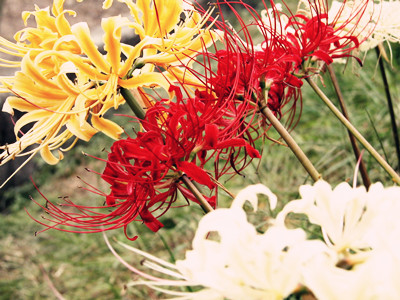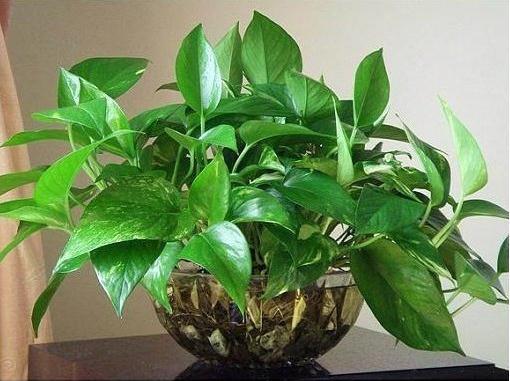The planting method of Iris
Iris is a bulbous plant, and every autumn is the time to plant irises. Many florists like to plant irises, but they are not familiar with the method of growing irises. How to plant irises well is a difficult problem that many flower lovers will encounter. The following is a brief introduction to you-some ways to plant irises:
1. The upper soil with good drainage and moderate moisture is suitable for planting. Mature compost should be applied before planting, and oil meal and grass ash can also be used as base fertilizer. The planting depth of the plant is 5 cm below the ground on the sparse orange soil with good drainage, and slightly higher than that on the clay to facilitate the growth of the plant.
2. Iris is full of sunlight and slightly shade-resistant. After planting, it is necessary to increase the light of iris to facilitate the sending out of flower spikes.
3. Base fertilizer can be applied before planting, and chemical fertilizer can be applied during the growing period. Watering depends on the situation, watering once a week during the growing period, and the amount of watering decreases gradually with the decrease of air temperature. In cold areas in winter, the bushes should be covered with stable manure or leaves to protect against cold.

The planting method of Iris-Iris flowers have a light fragrance and can be refined to make perfume, so what is the planting method of Iris? let's take a look at its specific method: Iris, also known as Phalaenopsis, Iris, is a general term for a family of herbaceous flowering plants. Iris is commonly used in our country to symbolize love and friendship. It has a bright future and a bright future. With a symbol of freedom and light, the flower has a light and elegant fragrance and can be refined to make perfume. The iris flower gets its name because its petals are shaped like the tail of a kite bird. Its generic name iris means "rainbow" in Greek, which means rich colors. In addition, Iris is the national flower of France.
1. Propagation method Iris can be propagated by dividing the rhizome:
Dig up the roots, remove the old roots, divide each plant into 2-3 points, leave 2-3 strong buds in each part, and then plant them in the soil, with the original white side facing down and the gray side facing up. Still according to the original depth, the deepest can not be more than 5 cm, otherwise the rhizome is easy to rot.
II. Conditions for reproduction
Iris is also slightly shade-resistant in an environment with plenty of sunlight, cool, moist and light. After planting, it is necessary to increase the light of iris to facilitate the sending out of flower spikes. But the cold tolerance was poor, the lowest overwintering temperature was 4 ℃, and the suitable growth temperature was about 18 ℃. Plants such as garden farming are usually planted in greenhouses, sprouting in autumn, blooming in winter and spring, and dormant in summer, requiring fertile, moist and well-drained neutral sandy soil.
Third, reproduction and maintenance of iris before planting, the soil must be watered, rotten compost can be used as base fertilizer, oil meal and plant ash can also be used as base fertilizer, and chemical fertilizer can be applied during the growing period. Keep the soil moist during planting to promote rapid rooting. Soil temperature is the most important factor after planting, the lowest temperature is 5-8 ℃ and the highest temperature is 20 ℃. The soil temperature directly affects the emergence rate. Too low soil temperature will reduce the flowering ability, so the optimum soil temperature is controlled between 16-18 ℃. Watering depends on the situation, watering once a week during the growing period, and the amount of watering decreases gradually with the decrease of air temperature. After the plant is withered and yellow, you need to stop watering, wait for the pot soil to be properly dry, put it in a cool and ventilated place, and replant it in autumn. If there is insufficient or excessive water supply, it will lead to inconsistent plant growth, delay plant germination and development, lead to plant height shorter and flower abortion, and easily lead to Pythium infection.
Fourth, diseases and insect pests in poor ventilation, but also accompanied by cloudy or wet, warm and humid weather, too much water is particularly easy to cause the occurrence of bacterial and fungal diseases. The above is the way to cultivate irises. Friends who like irises can plant them according to the above methods. If you like this article, please reprint it in order to help those flower friends who need this knowledge.
The growth habit of Iris the planting method of Iris
Iris is a kind of flowers with high ornamental value. Iris has a symbol of freedom and light, and it can also extract flavors to make perfume, so many people grow irises at home. Let's take a look at the growth habits and planting methods of irises.
First, about irises
Iris, also known as blue butterfly and purple butterfly, is a perennial herb of Iridaceae, native to central China and Japan, mainly distributed in south-central China. Iris flower has many colors, long florescence and resistance to extensive management. it is not only an excellent fresh cut flower, but also a good material for landscaping, which can be used as flower border, basic planting, and embellishment on rockery. Iris can be cultivated in greenhouse or in the field with a symbol of freedom and light, and it can also be refined to make perfume, so many people grow Iris at home. Iris, also known as Phalaenopsis, belongs to the Iris family. With beautiful flowers and delicious color, Iris is a good material for decorating gardens, communities and making flower blues. The management after flowering was carried out normally until the stems and leaves were withered and yellow from June to July. After the plant is withered and yellow, you need to stop watering, wait for the pot soil to be properly dry, put it in a cool and ventilated place, and replant it in autumn.
Iris originated in Africa and Egypt, but now it has been bred all over the world because of its fame. It grows in cool, moist and light-rich environment, but its cold tolerance is poor, the lowest overwintering temperature is 4 ℃, and the suitable growth temperature is about 18 ℃. Plants such as garden farming are usually planted in greenhouses, sprouting in autumn, blooming in winter and spring, and dormant in summer, requiring fertile, moist and well-drained neutral sandy loam.
Second, the growth habits of Iris
Perennial herbs. Rhizome long-striate or massive, transverse or obliquely extended, slender or fleshy. Leaves multi-basal, overlapping, arranged in 2 rows, sword-shaped, strip-shaped or filiform, veins parallel, midvein obvious or absent, base sheathlike, tip acuminate. Most species have only flowering stems without obvious aboveground stems, most species protrude from the ground, a few shorten and do not protrude, apical branches or unbranched; inflorescences born at the top of branches or only one flower at the top of the stem; flowers and inflorescence basally bearing several bracts, membranous or herbaceous; flowers larger, blue-purple, purple, red-purple, yellow, white Perianth tube trumpet-shaped, filiform or very short and inconspicuous, 6 perianth lobes, 2 whorls arranged, 3 outer perianth lobes, often larger than inner whorl, upper often reflexed and drooping, base claw-shaped, mostly furrow-shaped, smooth, without appendages or with cristate and bearded appendages, inner perianth lobes 3, erect or tilted outward.
Stamens 3, inserted at the base of outer perianth lobes, anthers extroverted dehiscent, flowers two filaments free from style base Pistil style single, upper 3-branched, branches flattened, arched curved, brightly colored, petal-shaped, apical 2-lobed, lobes semicircular, triangular or narrowly lanceolate, stigmas born at the base of the apical lobes of the style, mostly semicircular, ligulate, inferior ovary, 3-loculed, axile placentas, ovules numerous. Capsule ellipsoid, ovoid or globose, apex beaked or absent, loculicidal at maturity; seeds Pyriform, flattened semicircular or irregular polyhedron, with or without appendages.
Third, the planting method of Iris
1, soil disinfection soil disinfection is a very important link, generally using deep drying or chemical disinfection methods. The general time of deep turning and drying is about 20 days, and chemical disinfection is generally carried out by spraying chlorothalonil or pentachloronitrobenzene.
2. Before fertilization and planting, cow and horse manure or dried chicken manure can be applied as base fertilizer, and the base fertilizer should be mixed well with the cultivated soil. After planting in spring, urea can be applied once in early summer, phosphorus and potassium fertilizer can be applied once in early autumn, cattle and horse manure can be applied again in combination with frozen water at the end of autumn, and it can also be sprinkled directly on the nursery.
3. Watering irises like water. In the process of cultivation, the soil should be kept moist and too dry, which is not conducive to plant growth. Generally, in the non-rainy season, permeable water can be irrigated every 10 days, natural rainfall can be achieved in the rainy season, and antifreeze water should be irrigated at the end of autumn. The thawing water should be poured in time in the early spring of the following year, and the thawing water must be poured thoroughly.
4. in the nursery for weeding and planting iris, the weeding should be done well in advance. If there are weeds in the process of planting, they should be pulled out manually in time, and chemical herbicides should not be used to remove weeds as far as possible.
The above is the relevant introduction of this article, I believe you have a simple understanding of this after reading it, if necessary, you can continue to pay attention to the No. 1 home network to learn more information.
- Prev

Maintenance methods of Bedanhua
The maintenance method of the other shore flower is actually very simple, as long as we understand several key points in the maintenance method of the other shore flower. The maintenance method of the other shore flower is a necessary knowledge for flower lovers. The following is a detailed introduction to the maintenance method of the lower shore flower.
- Next

How to raise green pineapple in water
Cuttage propagation of hydroponic green pineapple is mainly propagated by cutting method. The branches of 15 cm to 30 cm are cut in late spring and early summer, and the leaves of 1 to 2 nodes at the base are removed. They are directly potted with culture soil, 3 to 5 in each pot, watered and planted in a cool and ventilated place to keep the basin soil moist.
Related
- Fuxing push coffee new agricultural production and marketing class: lack of small-scale processing plants
- Jujube rice field leisure farm deep ploughing Yilan for five years to create a space for organic food and play
- Nongyu Farm-A trial of organic papaya for brave women with advanced technology
- Four points for attention in the prevention and control of diseases and insect pests of edible fungi
- How to add nutrient solution to Edible Fungi
- Is there any good way to control edible fungus mites?
- Open Inoculation Technology of Edible Fungi
- Is there any clever way to use fertilizer for edible fungus in winter?
- What agents are used to kill the pathogens of edible fungi in the mushroom shed?
- Rapid drying of Edible Fungi

